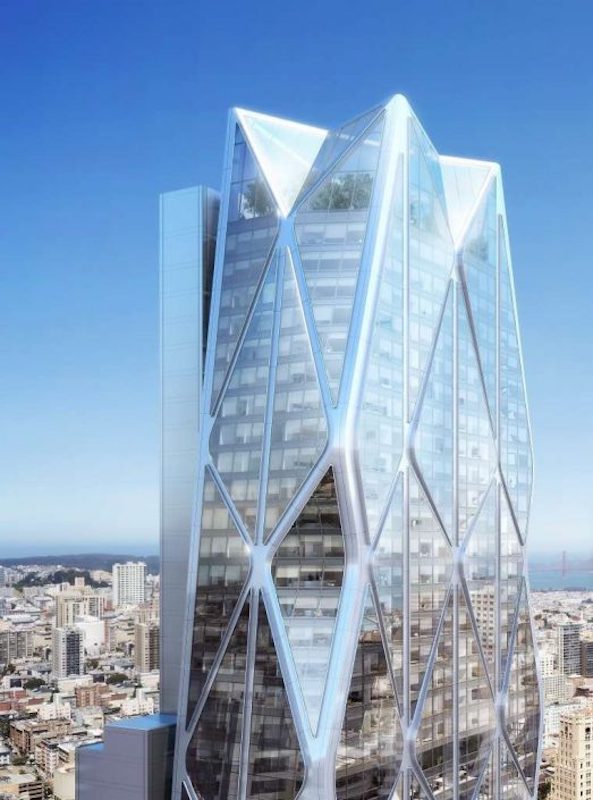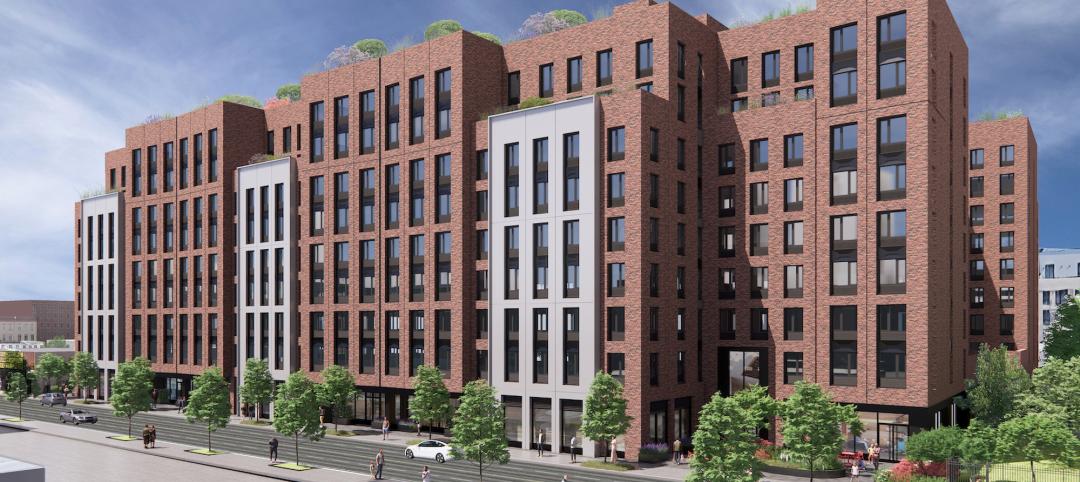The general contractor Swinerton has rolled out a new brand identity that reflects the businesses it has added or evolved into over the past several years.
The San Francisco-based company, which is celebrating its 130th anniversary this year, is probably best known as Swinerton Builders, a brand it started using in 2001. But over the past six or seven years, the company has diversified in different directions.
In 2008, it launched Swinerton Renewable Energy, which has grown to become the largest builder of solar power plants in the U.S., with $1.5 billion in revenue last year, and the third-largest in the world.
Swinerton Renewable Energy has served the company as a platform for international growth. Over the past four years, it has built nine solar power plants in Canada, and a 750-MW solar power plant in Mexico.
Within its renewable energy unit, which is based in San Diego, Swinerton launched SOLV in 2012, a division focused on operating and maintaining solar utility plants. SOLV is now the largest company of its kind, managing more than 6 MW of power, and with 150 employees dedicated to that business. Last year, GTM Research and SOLICHAMBA identified SOLV the top service provider in the global operations and maintenance market for the second consecutive year.

Swinerton's new logo shows an architect and contractor pointing “outside the box,” which emphasizes the company's expanding into new businesses and markets. Image: Swinerton
Seeking better profit on work
Swinerton isn’t walking away from general contracting work; far from it. “We’re still a commercial GC at heart,” says Jeff Hoopes, a 34-year company vet who has been its CEO and Chairman since 2013. Under his leadership, Swinerton has expanded its reach beyond the western states by opening offices in Atlanta five years ago, Raleigh two years ago, and Charlotte last fall.
One of Swinerton’s larger current projects is Oceanwide Center, which it’s building in joint venture with the GC Webcor. When completed in 2021, Oceanwide’s two towers in San Francisco Transit Center district will include 265 residential units, a five-story-tall 26,000-sf public square, and a 169-key Waldorf Astoria hotel.
But it’s tough making money as a contractor, Hoopes laments. The industry averages only about 1% of a project’s revenue for contracting fees. “We’re looking at five times that” from the new businesses that Swinerton has moved into, Hoopes says.
So the company has been pulling away from government contracting projects, primarily because Congress has been inconsistent about funding them properly. Conversely, Swinerton is doing more co-investing with developer clients on projects like a 300-unit housing complex in Houston it recently worked on.
Hoopes says his company has also been transitioning into more self-perform work. It has 850 employees in California alone who do drywall. Swinerton designs and builds parking structures. And it wants to get into concrete pouring, and to either start up or purchase an electrical contractor. “We want to control more of every job,” says Hoopes.
Swinerton currently has around 2,000 “craft” workers in the field, along with 1,950 salaried employees, and 500-1,000 who work in the renewable energy business. When asked if, like many other GCs, his company has had trouble finding workers, Hoopes says that trades “want to work for a GC … because we’re employee owned, have good benefits, and offer career opportunities.”
Swinerton is 50% employee owned and 50% management owned. Its status as an ESOP is one of the reasons why Hoopes says he’s more concerned about growing Swinerton’s bottom line than he is about increasing its revenue, which nonetheless hit $4 billion last year and is projected to increase to $4.5 billion in 2018.

Swinerton is still committed to commercial building. One of its major projects is Oceanwide Center in San Francisco. Image: Swinerton
Still exploring new territories
To that end, Swinerton, with 15 offices and 11 practices, is looking at opening offices in New York and Chicago. It is also getting into the business of turning animal waste into energy. In July its plant on 42 acres in Warsaw, N.C., will be fully funded. That plant—which Swinerton owns in partnership with Carbon Cycle Energy—is set up to convert 4,200 tons of solid and liquid biodegradable materials per day to 6,500 dekatherms of biomethane gas. At full capacity, this plant will generate more than 1 billion cubic meters of pipeline-quality gas over the length of its 15-year contract with Duke Energy. That would be enough to power 32,000 houses.
Swinerton also has waste conversion plants in Phoenix and Missouri.
As part of its rebranding, Swinerton has made changes at its philanthropic arm, The Swinerton Foundation, which it started in 2002. The Foundation is transitioning from a private to a public nonprofit organization, and its new focus areas are equitable education, resilient communities, and workplace development.
Related Stories
Hotel Facilities | Jan 22, 2024
U.S. hotel construction is booming, with a record-high 5,964 projects in the pipeline
The hotel construction pipeline hit record project counts at Q4, with the addition of 260 projects and 21,287 rooms over last quarter, according to Lodging Econometrics.
Modular Building | Jan 19, 2024
Virginia is first state to adopt ICC/MBI offsite construction standards
Virginia recently became the first state to adopt International Code Council/Modular Building Institute off-site construction standards.
Modular Building | Jan 19, 2024
Building with shipping containers not as eco-friendly as it seems
With millions of shipping containers lying empty at ports around the world, it may seem like repurposing them to construct buildings would be a clear environmental winner. The reality of building with shipping containers is complicated, though, and in many cases isn’t a net-positive for the environment, critics charge, according to a report by NPR's Chloe Veltman.
Sponsored | BD+C University Course | Jan 17, 2024
Waterproofing deep foundations for new construction
This continuing education course, by Walter P Moore's Amos Chan, P.E., BECxP, CxA+BE, covers design considerations for below-grade waterproofing for new construction, the types of below-grade systems available, and specific concerns associated with waterproofing deep foundations.
Sponsored | Performing Arts Centers | Jan 17, 2024
Performance-based facilities for performing arts boost the bottom line
A look at design trends for “budget-wise” performing arts facilities reveals ways in which well-planned and well-built facilities help performers and audiences get the most out of the arts. This continuing education course is worth 1.0 AIA learning unit.
Affordable Housing | Jan 16, 2024
Construction kicks off on $237.9 million affordable housing project in Brooklyn, N.Y.
Construction recently began on an affordable housing project to create 328 units for low-income and formerly homeless populations in Brooklyn, N.Y.
Giants 400 | Jan 15, 2024
Top 90 Hospital Facility Construction Firms for 2023
Turner Construction, Brasfield & Gorrie, JE Dunn Construction, McCarthy Holdings, and STO Building Group top BD+C's ranking of the nation's largest hospital facility general contractors and construction management (CM) firms for 2023, as reported in the 2023 Giants 400 Report.
Airports | Jan 15, 2024
How to keep airports functional during construction
Gensler's aviation experts share new ideas about how to make the airport construction process better moving forward.
Adaptive Reuse | Jan 12, 2024
Office-to-residential conversions put pressure on curbside management and parking
With many office and commercial buildings being converted to residential use, two important issues—curbside management and parking—are sometimes not given their due attention. Cities need to assess how vehicle storage, bike and bus lanes, and drop-off zones in front of buildings may need to change because of office-to-residential conversions.
MFPRO+ News | Jan 12, 2024
As demand rises for EV chargers at multifamily housing properties, options and incentives multiply
As electric vehicle sales continue to increase, more renters are looking for apartments that offer charging options.
















